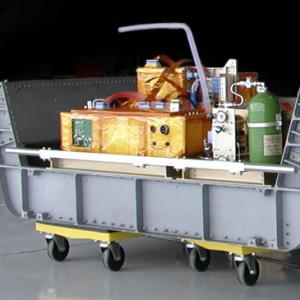The design of the newly developed total water instrument is based on the same principles as the water vapor instrument, and is intended to fly in conjunction with it. Conceptually, the total water instrument can be thought of as containing four subsystems:
1. An inlet through which liquid and/or solid water particles can be brought into an instrument duct without perturbing the ambient particle density.
2. A heater that efficiently evaporates the liquid/solid water before it reaches the detection axis.
3. Ducting through which the air flows to the detection axis without perturbing the (total) water vapor mixing ratio.
4. A water vapor detection axis that accurately and precisely measures the total water content of the ambient air.
Harvard Total Water
Instrument Type
Measurements
Aircraft
Point(s) of Contact
Groups
Disclaimer: This material is being kept online for historical purposes. Though accurate at the time of publication, it is no longer being updated. The page may contain broken links or outdated information, and parts may not function in current web browsers. Visit https://espo.nasa.gov for information about our current projects.


